School Cake is an incredibly light vanilla sponge topped with a simple icing and lots of sprinkles. This retro old school pudding will whizz you straight back to the 1980s!
I surveyed you on Facebook and this has been voted your #1 Best Old School Recipe and the cake you're most likely to make from your school days. So glad you love this one :-)
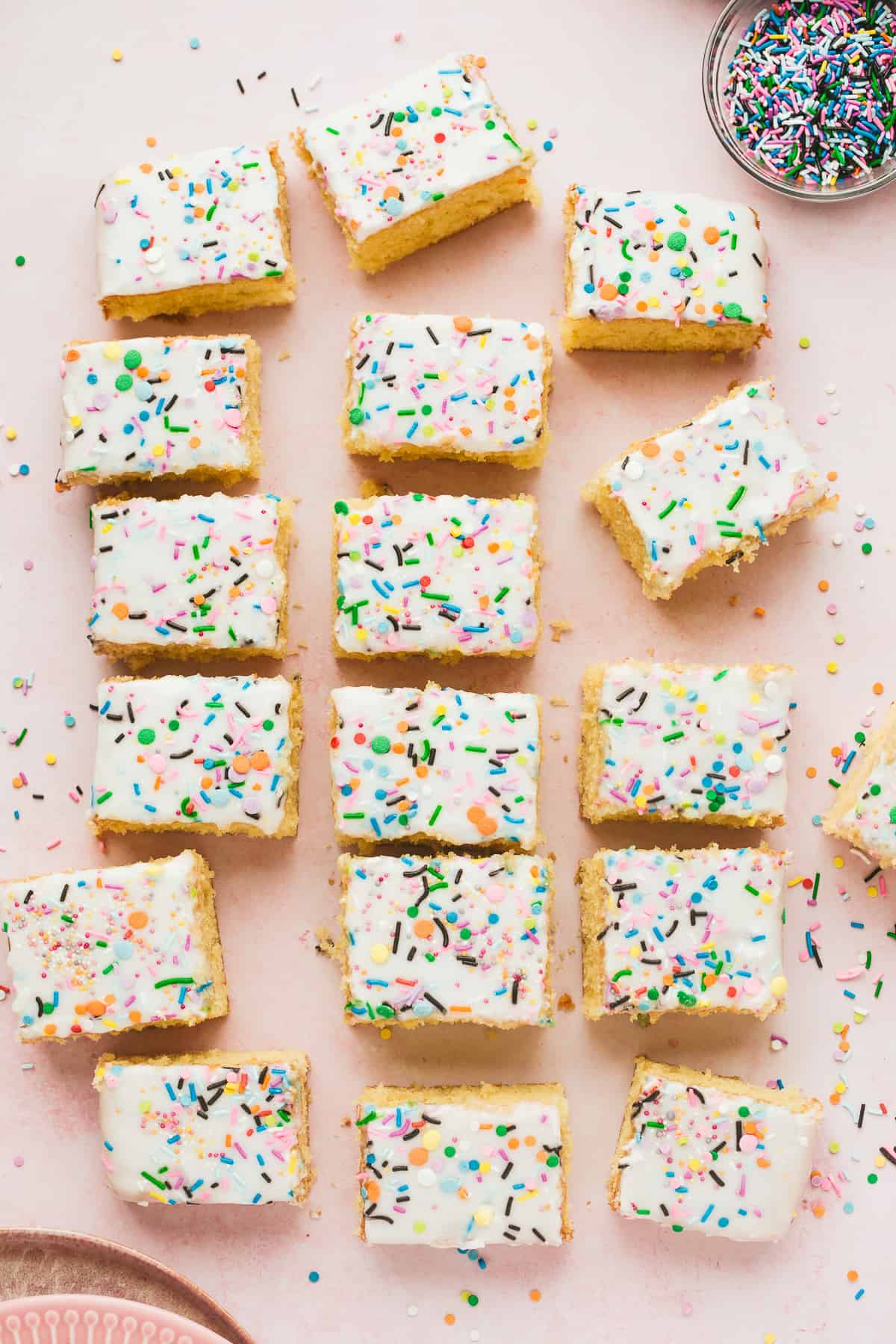
This has got to be one of my most highly requested recipes EVER. I have indeed got a very similar recipe for Tottenham Cake but no matter how many times I tell people it's almost identical - I'm asked for a true version of Old School Cake so here it is!
Otherwise known as Sprinkle Cake this is one of those Old School Puddings that never gets, well...old. The recipe uses just 8 very simple ingredients, in fact, you probably have everything you need to make this in your kitchen cupboards right now!
It really is a beauty of a sponge that is incredibly quick and easy to make. There's something so delicious about simple traybakes and I know you all really enjoy making them.
Once you get the knack of School Cake it can be easily customised with different flavours. Just like my Jam and Coconut Sponge, for example.
You might want to serve this with pink custard like they did in ye olden days. Actually, according to my daughter (age 8), this simple sprinkle cake is still very much part of the school dinner menu!
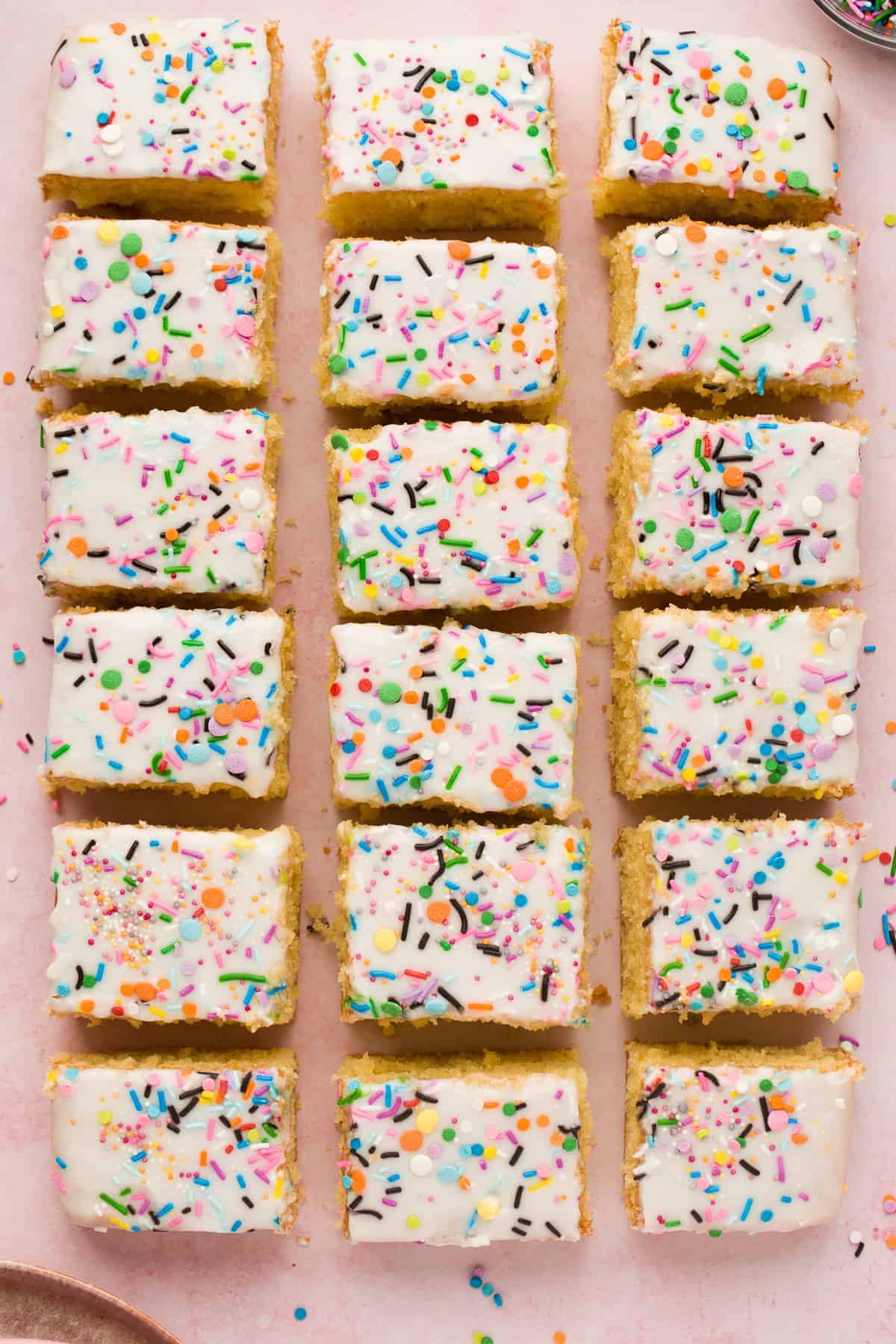
I love custard as much as the next girl but actually, I prefer this cake just as it is but with the icing on top and sprinkles of course!
This recipe is probably pretty close to how it was made in the 60s, 70s and 80s. Although this is a scaled-down version because the school cooks would have baked this in those massive metal trays.
I used Stork for this recipe because real butter wouldn't have been cost-effective for the school. Butter would result in a denser sponge and wouldn't be as authentic as using marg.
You can use any baking margarine or if you want to use butter the recipe will still work. However, I quite like using Stork for baking as for one, you can use it straight from the fridge, and two, it does make for a marvellously fluffy sponge.
Whenever I make a sponge cake I use the weigh your eggs method. This means you weigh all your sponge ingredients out to be the same weight as your eggs.
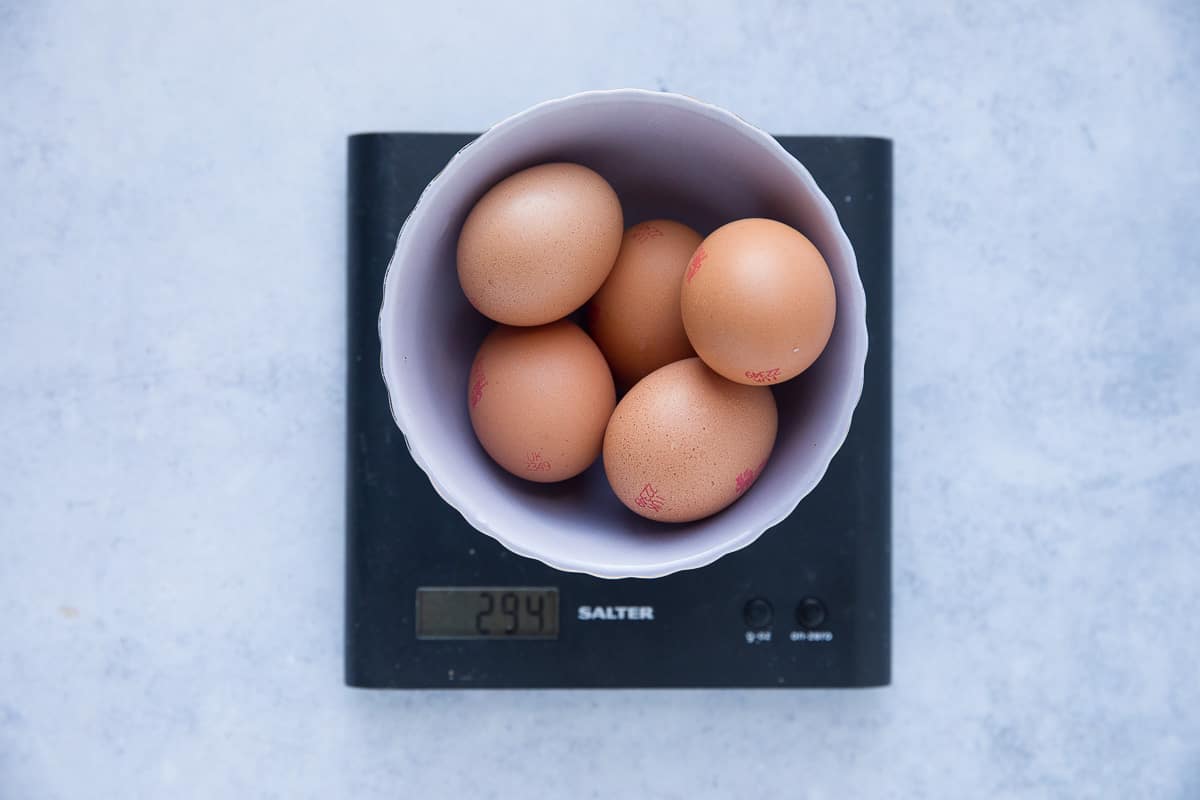
This is handy for anyone that has a mixture of large and medium eggs or if you're lucky enough to have chicken eggs that are all random sizes.
Weigh the eggs in their shells and get them as close to 300g as you can. Alternatively, if for example you only had 4 eggs and they all weigh 260g you can weigh out your sugar, flour and margarine to be the same.
It does seem like a lot of eggs but we all know baking is a science. I'm not sure of the exact science, mind you, but it's how my mum and grandmother made sponge cakes so if it's good enough for them it's good enough for me.
Most importantly, it works. So trust me on the eggs!
As for the icing, you can mix the icing sugar with water if you like but when you make it with milk like I did, it's whiter and looks nicer in my opinion.
Use any sprinkles you fancy, I used a bit of a mixture of hundreds and thousands, colourful jazzies and some rainbow confetti sprinkles I had in the cupboard.
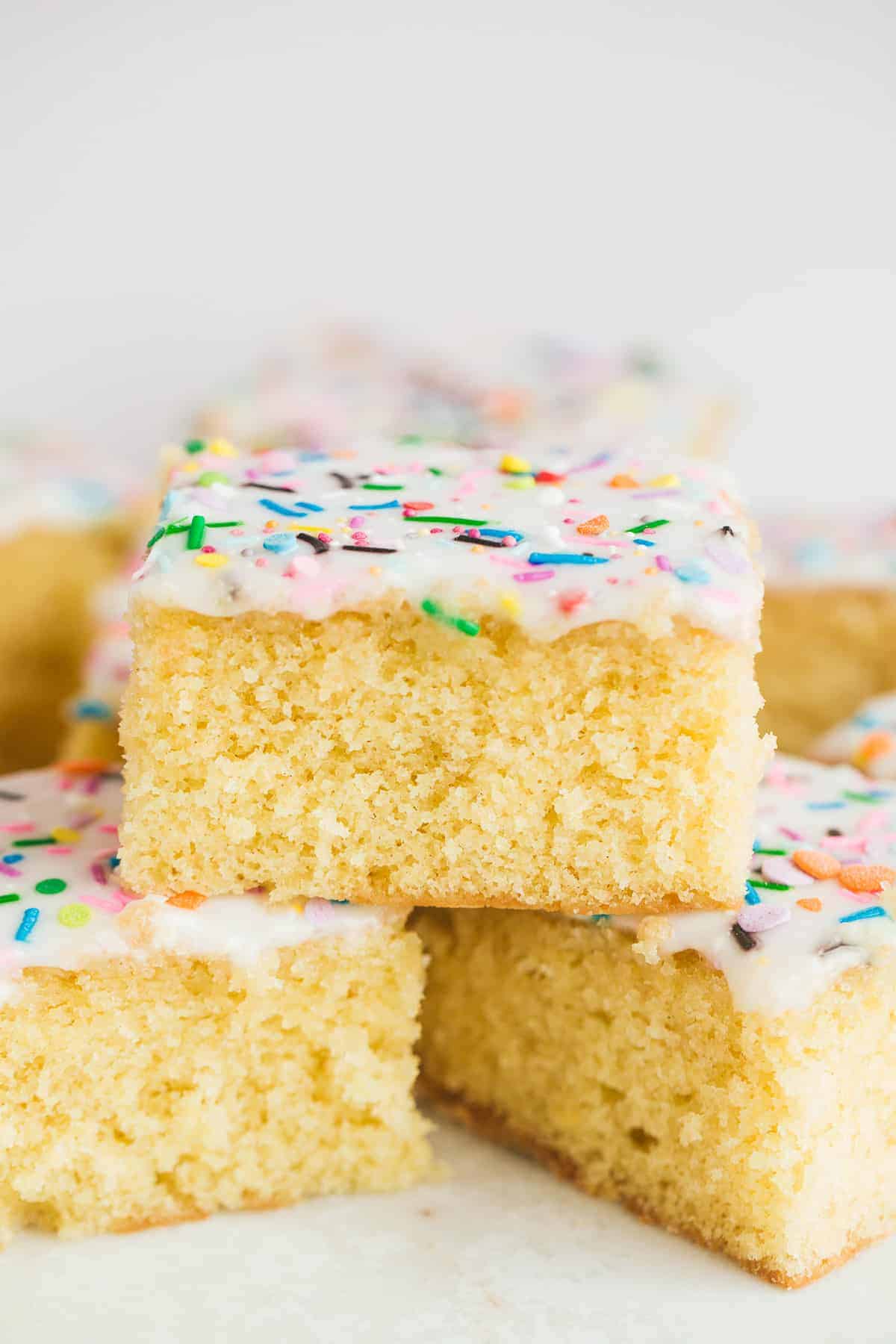
FAQ
Not at all! Will it smell eggy as it's cooking? Yes, but that smell will disappear once the sponge is baked and your cake will be perfect! If your eggs are not fresh and vanilla extract isn't used then you might be able to taste the eggs in the resulting sponge.
You can use any baking margarine or butter although I do recommend Stork for a light, fluffy and moist sponge.
Although self-raising flour does have baking powder already added I find that adding a little baking powder gives a better rise. This is after extensive testing and lots of cake eating on my part!
Add 4 level teaspoons of baking powder to 300g of plain flour. Mix together then sift it into a bowl to ensure the baking powder is evenly distributed.
You can use granulated sugar but caster sugar is preferable because it has a finer texture.
The milk adds a softness to the texture of the crumb it also brings the batter together into a smooth mixture. You can leave it out but your cake won't be quite as light and tender.
I used a 13u0022 x 9u0022 Wilton Baking tin. I use this size tin for all my traybakes.
If your tin differs by a couple of inches it will be fine, however, you may need to adjust the baking time. You can read this article to find out how to adapt the recipe to fit a different sized tin.
Weigh 3 eggs in their shells then match the weight of the margarine, sugar and flour to be the same weight as the eggs.
When you pour the batter into the tin you can take a dessert spoon and briefly wet it under the tap. Use this to smooth the batter in the tin. Tap the tin on the work surface to remove any air bubbles. Don't be tempted to open the oven door until after 30 minutes.
Check the cake after 30 minutes. A baked sponge will be lightly golden and spring back to the touch, it will be shrinking away from the sides of the tin slightly. A toothpick inserted into the centre of the cake will come out clean and the cake won't wobble when you shake the tin.
I cooled the cake in the tin then inverted it so the underneath and smoothest surface of the cake was on top.
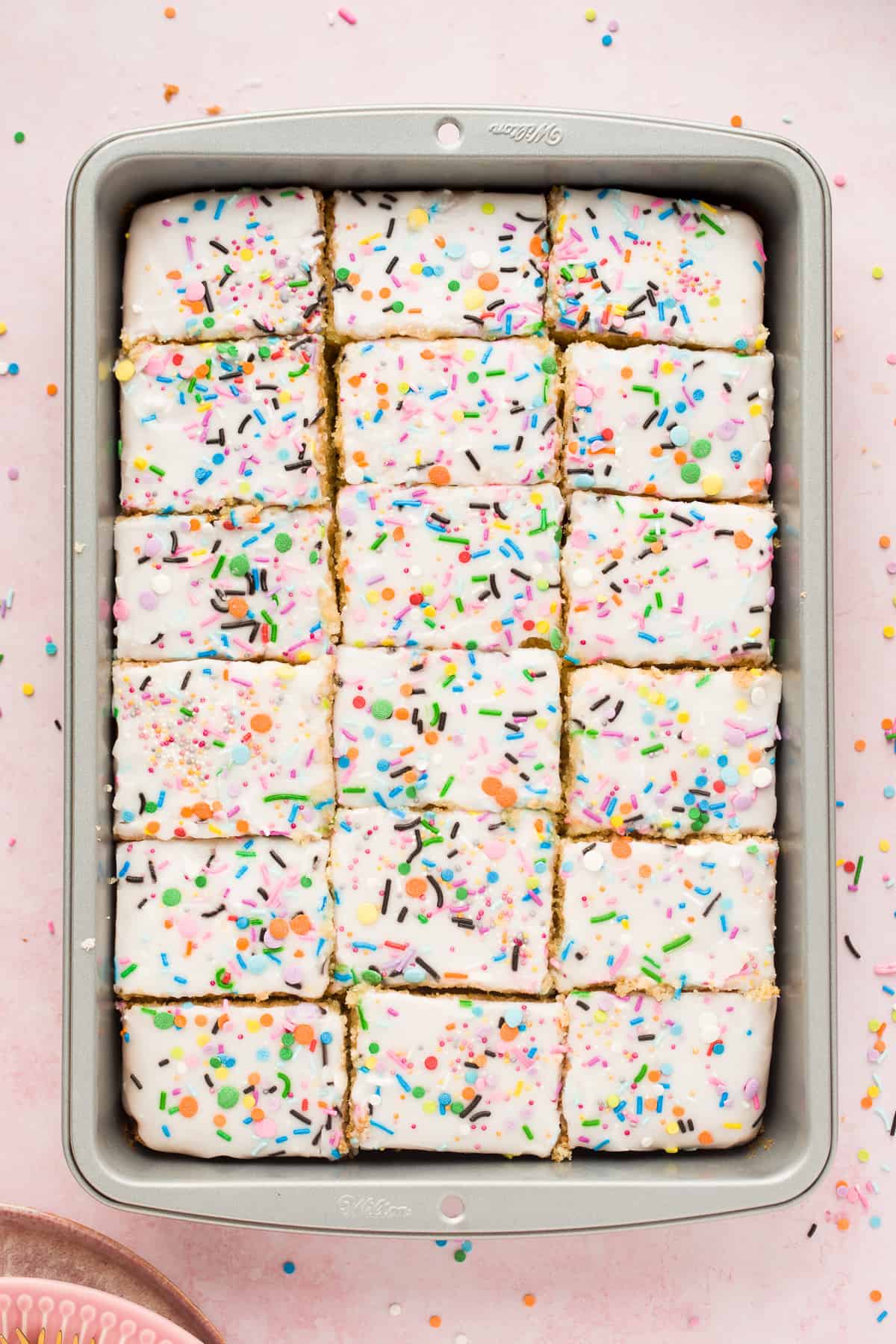
More Old School Puddings you'll love!
- Manchester Tart
- Victoria Sponge
- Chocolate Concrete
- Cornflake Tart
- Pineapple Upside Down Cake
- Mars Bar Slice
- Chocolate Sprinkle Cake
- Butterscotch Tart
School Cake (#1 Best Recipe!)
School Cake is an incredibly light vanilla sponge topped with a simple icing and sprinkles. This retro cake will whizz you straight back to the 1980s!
Ingredients
- 300 g Stork, (baking margarine)
- 300 g caster sugar
- 5 medium eggs, (weighing approx 300g in their shells)
- 1 tsp vanilla extract
- 300 g self-raising flour
- 1 tsp baking powder
- 3 tbsp milk, whole or semi-skimmed is fine
- 400 g icing sugar
- 6-8 tbsps milk, whole or semi-skimmed is fine
- Sprinkles
Instructions
- Preheat the oven to 180ºC/160ºC Fan/Gas 4/350ºF Line a 13" x 9" baking tin with baking paper.
- Add the margarine and caster sugar to a large mixing bowl and cream together until light and fluffy. This will take 3-4 minutes using a handheld electric whisk.
- Add the eggs one at a time, beating very well in-between each addition.
- Add the vanilla extract and beat well.
- Put a sieve over the mixing bowl and add the self-raising flour and baking powder to it. Sieve it into the bowl then, using a spatula or wooden spoon fold it into the mixture. When you've almost folded the flour in, add the milk and very gently fold the mixture together until it is smooth.
- Transfer the cake batter into the prepared tin. Level it with a spoon and then tap the tray on the work surface to remove any air bubbles. Bake in the centre of the preheated oven for 30-35 minutes or until a toothpick inserted into the centre comes out clean and the sponge springs back when touched. Remove from the oven and leave to cool in the tin.
- Put the icing sugar into a bowl and add the milk a little at a time until you reach the desired consistency.
- When the cake has cooled invert it onto a serving plate, pour the icing on top using a palette knife to smooth it over the top of the cake. Add sprinkles and slice into rectangles or squares.
Notes
- When you add the eggs, if the mixture splits add a tablespoon of the self-raising flour and beat well.
- Run a large dessert spoon briefly under the tap and use it to smooth the top of the cake batter.
- If the icing is too runny add a little more icing sugar, if it's too thick add a little more milk.
- Wrap the cake well or put it in an airtight container. Store at room temperature for 4-5 days.
- See FAQ above if you have any unanswered questions or if you need to ask something else please leave a comment below and I'll get back to you.
Nutrition Information:
Yield: 18 Serving Size: 1 gramsAmount Per Serving: Calories: 352Total Fat: 15gSaturated Fat: 3gUnsaturated Fat: 0gCholesterol: 55mgSodium: 164mgCarbohydrates: 52gFiber: 1gSugar: 39gProtein: 3g
brenda
I WANT TRY IT
Yvonne Wallace
This cake recipe is amazing! Excellent results every time! Thank you x